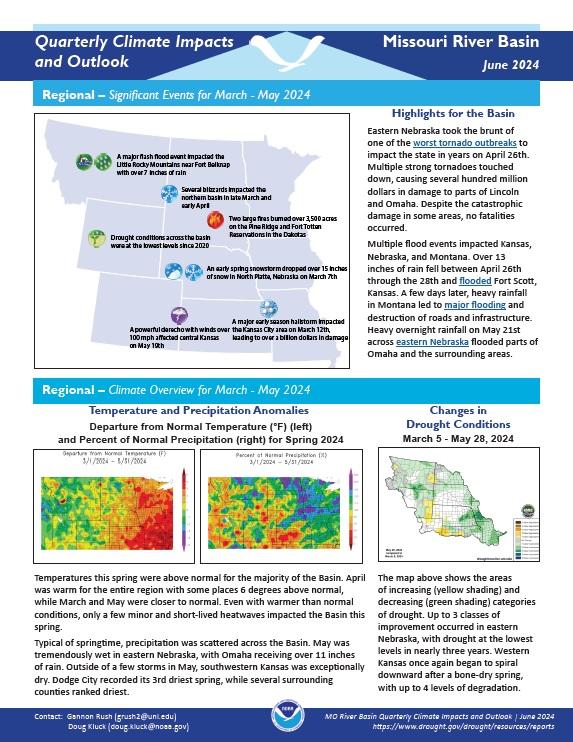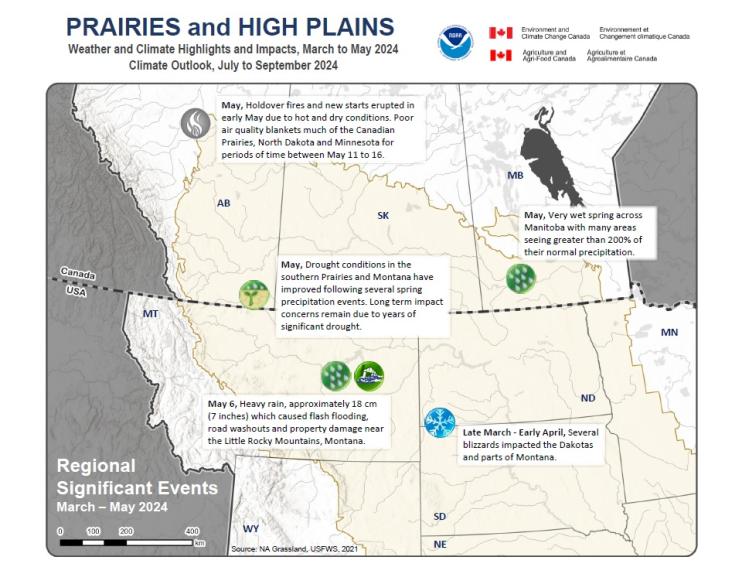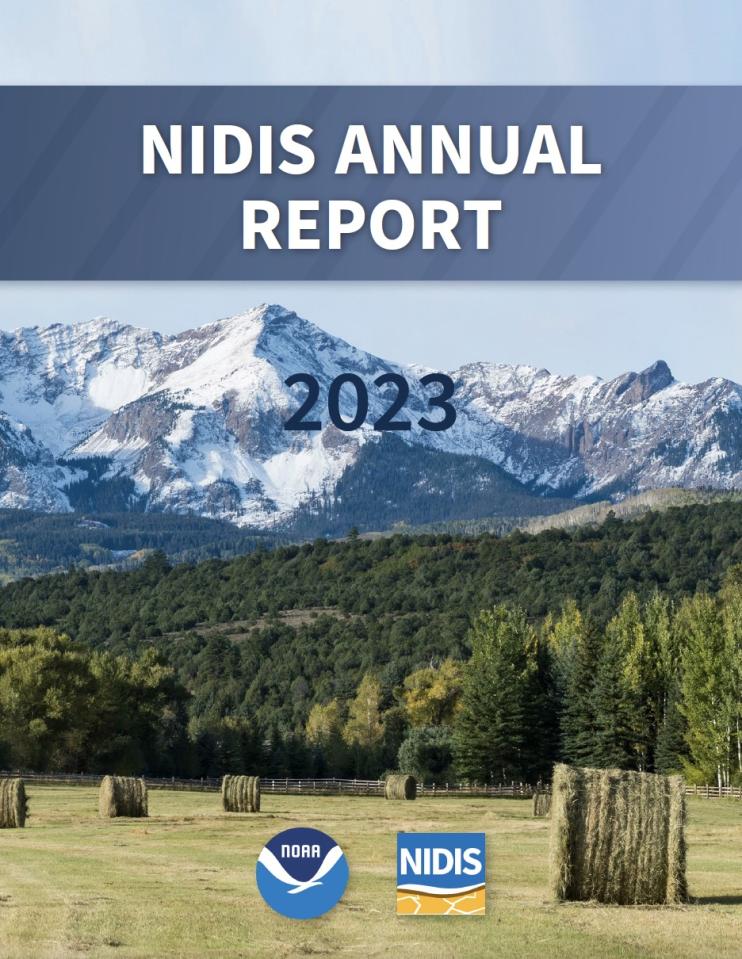For the latest forecasts and critical weather information, visit weather.gov.
Quarterly Climate Impacts and Outlook for the Missouri River Basin for March–May 2024. Dated June 2024.
Temperatures this spring were above normal for the majority of the Basin. Typical of springtime, precipitation was scattered across the Basin.
Quarterly Climate Impacts and Outlook for the Canadian and U.S. Prairies and High Plains for March–May 2024, with an outlook for July–September 2024. Dated June 2024.
The Workshop for Building Drought Resilience in a Changing Climate with Upper Columbia and Missouri Basin Tribes was convened in September 2023 with an overarching goal of strengthening relationships between Tribal Nations, Tribal Colleges and Universities (TCUs), and their partners across the region.
From worsening water quality to respiratory and metal health impacts, drought can have profound and widespread impacts on the health of communities across the nation. To better prepare health professionals’ response to the health effects of drought, a research team from the University of Nebraska Medical Center’s College of Public Health recently released a new guide to assist healthcare providers and public health officials communicate about the health risks of drought with their patients and broader communities.
The National Integrated Drought Information System (NIDIS) is pleased to share our 2023 Annual Report to provide insight into the many accomplishments of the program over the previous year and the opportunities that lie ahead.








